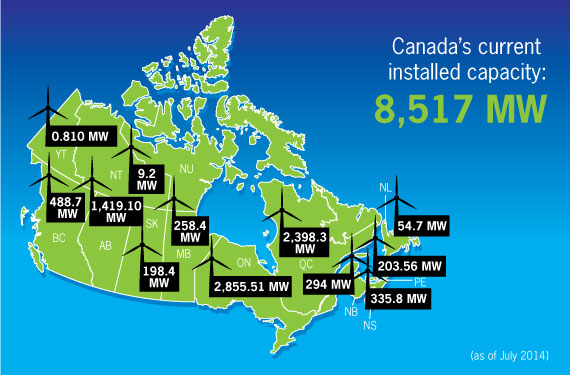Fraser Institute report misses the mark on consumer electricity costs.
A recent Fraser Institute study misrepresents the impact of wind energy on the electricity bills paid by Ontario consumers. This is the conclusion of Power Advisory LLC, a leading management consulting firm that specializes in North American electricity markets. On behalf of the Canadian Wind Energy Association (CanWEA),

When all elements of the electricity bill are taken into account, Power Advisory concludes that wind energy accounts for only 4% of a typical Ontario consumer’s electricity bill.
Power Advisory LLC undertook an analysis of the Fraser Institute report, “What Goes Up… Ontario’s Soaring Electricity Prices and How to Get Them Down.”
By focusing solely on the Global Adjustment (GA), one component of every consumer’s electricity bill, the Fraser Institute study fails to acknowledge several key drivers of electricity price increases, including the costs of upgrading and renewing aging electricity infrastructure (such as transmission lines and smart metres), and charges such as the Debt Retirement Charge associated with Ontario’s past investments in nuclear power. When all elements of the electricity bill are taken into account, Power Advisory concludes that wind energy accounts for only 4% of a typical Ontario consumer’s electricity bill.
As for the GA, the main reason it has gone up is that Hourly Ontario Energy Price (HOEP) has gone down. There is an inverse relationship between the two: when one goes up, the other goes down. While total electricity costs have gone up, the changes in the GA described by the Fraser Institute have been largely offset by changes in the HOEP.
Power Advisory concludes that the Fraser Institute’s study methodology ignores the major driver of reductions in the HOEP: falling natural gas prices. It is reductions in the price of natural gas over time that largely explain the increases seen in GA compensatory payments to all generators (including nuclear, wind, hydro, solar and gas) under Ontario’s electricity market structure. By leaving the main drivers – HOEP and the price of natural gas – out of their analysis, the Fraser Institute grossly overstates the impact of wind on consumers’ electricity bills.
CanWEA president Robert Hornung says that electricity prices are increasing because Ontario is transitioning to a modern, agile and cost-competitive electricity system, which benefits all Ontarians.
“All new sources of power generation will cost more to develop than power plants built a generation or more ago, and wind energy is now cheaper than new nuclear power, cost-competitive with hydroelectric power and does not bear the commodity and carbon price risks associated with natural gas generation,” he says.
Mr. Hornung adds that Ontario’s electricity generation fleet continues to evolve as it incorporates clean and affordable electricity supply in order to safely and reliably meet the province’s future electricity needs.
“This transition must continue and the Fraser Institute’s recommendation to restart some of Ontario’s coal-fired generation fleet flies in the face of our clear need to reduce greenhouse gas emissions to address climate change,” he says.
Canadian Wind Energy Association
www.canwea.ca
Filed Under: News




